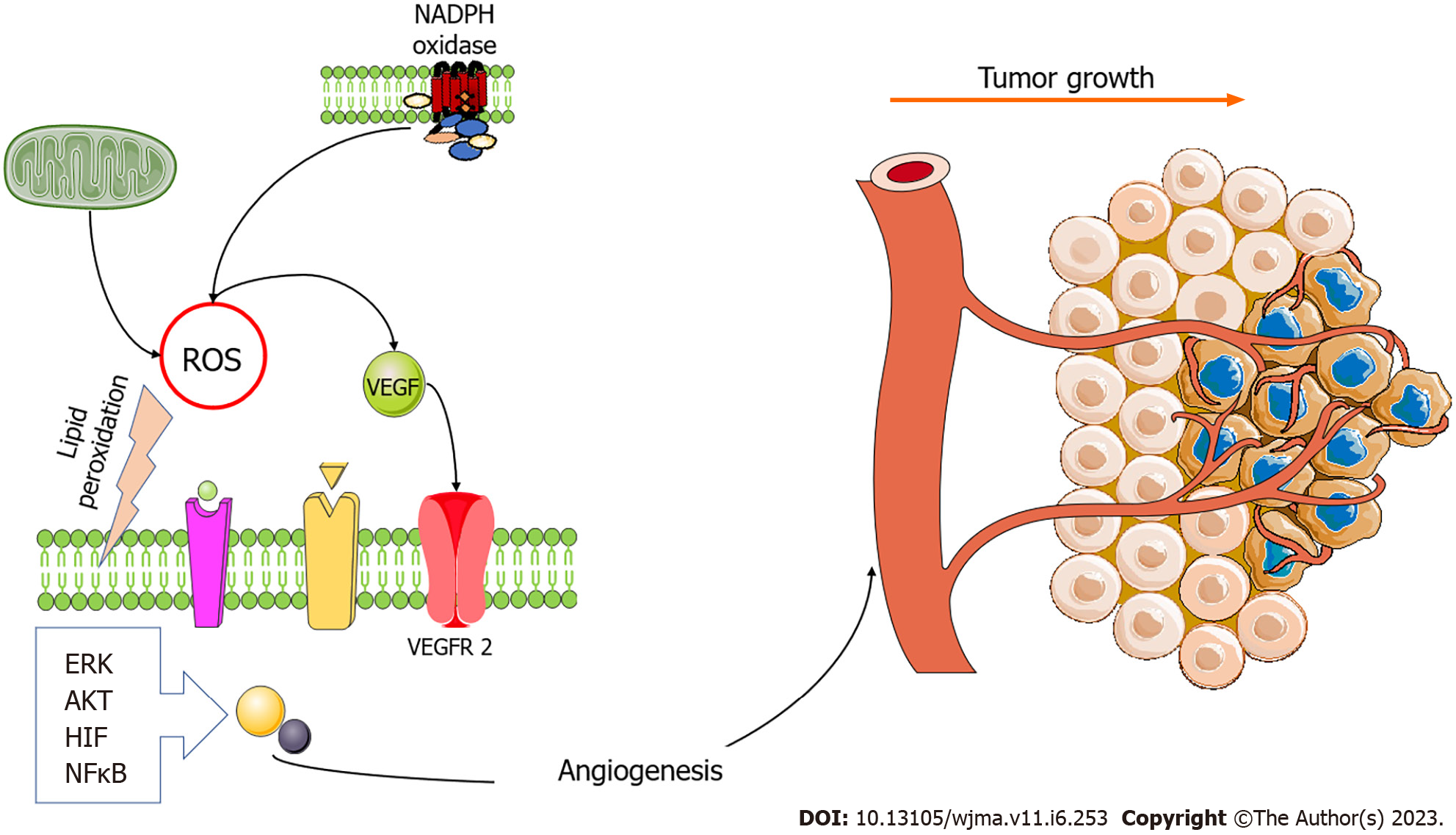Copyright
©The Author(s) 2023.
World J Meta-Anal. Sep 18, 2023; 11(6): 253-265
Published online Sep 18, 2023. doi: 10.13105/wjma.v11.i6.253
Published online Sep 18, 2023. doi: 10.13105/wjma.v11.i6.253
Figure 1 The two main sources of oxidative stress, mitochondria, and nicotinamide adenine dinucleotide oxidases generate reactive oxygen species that trigger angiogenesis.
The vascular endothelial growth factor (VEGF) pathway is modulated by reactive oxygen species (ROS), and oxidative stress stimulates VEGF production in several cell types, including endothelial cells. ROS enhance angiogenesis by increasing hypoxia-inducible factor (HIF) 1 α, protein kinase B (AKT), and regulated extracellular kinase (ERK). However, oxidative stress also induces angiogenesis in a VEGF-independent manner by lipid peroxidation and generating metabolites that act either as ligands or by inducing post-translational modifications of proteins within angiogenic signaling pathways, such as nuclear factor kappa-light-chain enhancer of activated B cells (NFκB) activation pathways. Figure was prepared using images from Servier Medical Art by Servier (https://smart.servier.com), which are licensed under a Creative Commons Attribution 3.0 Unsupported License. NADPH: Nicotinamide adenine dinucleotide; VEGFR2: Vascular endothelial growth factor receptor 2.
- Citation: Andriolo LG, Cammisotto V, Spagnoli A, Alunni Fegatelli D, Chicone M, Di Rienzo G, Dell’Anna V, Lobreglio G, Serio G, Pignatelli P. Overview of angiogenesis and oxidative stress in cancer. World J Meta-Anal 2023; 11(6): 253-265
- URL: https://www.wjgnet.com/2308-3840/full/v11/i6/253.htm
- DOI: https://dx.doi.org/10.13105/wjma.v11.i6.253









